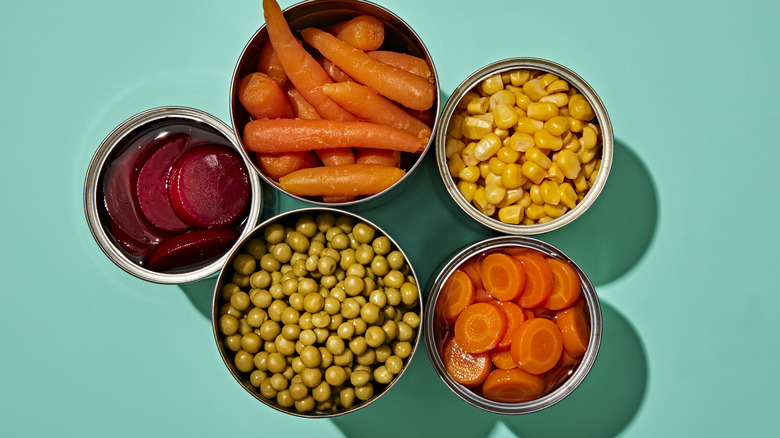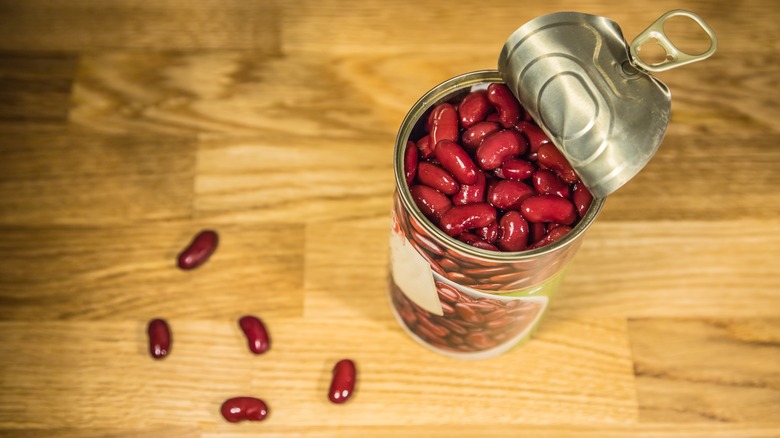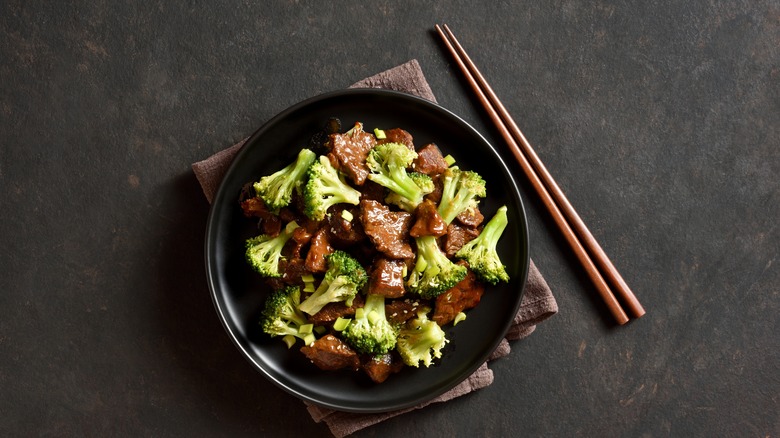The Extra Step You Shouldn't Skip When Cooking Canned Vegetables
The U.S. Department of Agriculture advises that high-acid products like canned tomatoes and canned fruit will retain their quality for up to 18 months, but should be consumed within one year of the purchase date. That extended shelf-life makes canned vegetables an ideal ingredient in sauces or stews. But you may find that, when trying to cook with canned beans or corn, for example, they don't quite have the flavor and crunch of their fresh counterparts.
That's because these vegetables are often packed in salty, acidic liquids that help sterilize and preserve them over time, but they can impact freshness and texture. In order to revitalize them, there's one quick step you can take to bring back the flavor: blanching. Simply release the veggies from the can and submerge under boiling water for a quick minute or so and then let immediately cool — this easy step will make a world of difference.
Even in a dish that requires optimal freshness where veggies are the star, like a Mediterranean-inspired chickpea, cauliflower and tomato salad, canned vegetables can still be a solid go-to, with just this bit of prep.
Why you should blanch canned vegetables
Rinsing and blanching canned vegetables will offer several benefits, in particular offsetting any flavors from the canning liquid. First, if the product was packed with additional salt, which many have to provide some initial flavor, a simple drain of the canning fluid followed by a rinse will allow you to easily remove any excess sodium.
The quick process for blanching in boiling water for a minute or so can also remove any lingering stale flavors from the time the food has been in the can. Even if your vegetables were completely insulated from bacteria in the vacuum-sealed container, blanching also removes any potential microorganisms, in addition to preventing the action of enzymes that can cause their flavor and texture to deteriorate.
Because canned veggies come fully cooked to begin with, you can also submerge them in ice water to help firm them up and add some crispness. This process allows you to easily restore the vegetables' natural texture, acidity, and flavor before adding them to the dish of your choice.
Unique ways to use canned vegetables
Canned vegetables have a high potential to excel in dishes where you don't want to have too much vegetable prep. One such example is the Chinese takeout classic, beef and broccoli. In this dish, the beef — developed with soy sauce, garlic and ginger — forms a focal point for the overall flavor. The broccoli adds some light crunch and texture, in addition to acting as a carrier for the sauce. You can always rinse canned broccoli, blanch it to remove any canned flavor, and submerge it in an ice bath to restore some crunch before adding it to the hot wok with beef for a minute or two to cook and let it all simmer together.
Canned corn can be easily transformed into Mexican esquites — a creamy side dish of toasted corn kernels commonly sold as street food — by giving the kernels a light rinse and blanch before gently toasting them in a skillet on low heat. Then add onion, garlic, mayonnaise, chili powder, cotija cheese, and lime to complete the dish.
Canned beets can also be combined with vegetable stock, sour cream, white wine vinegar, chives and radish for an easy chilled summer borscht. But, simply using the canned beets as-is could throw off the salt and acidity of the final dish. As long as your can of vegetables is intact, a quick rinse and blanche can make them taste like new.



